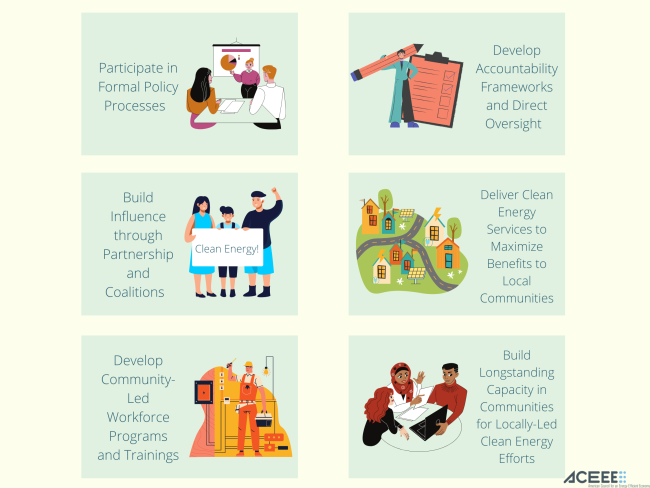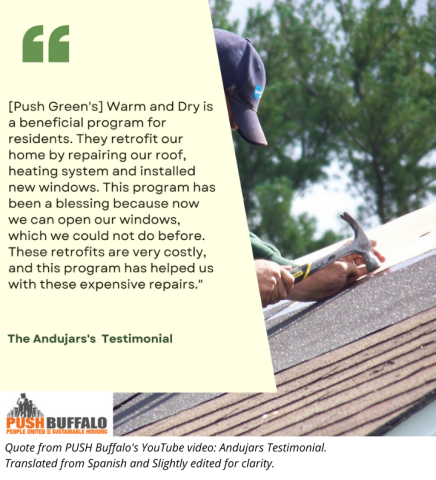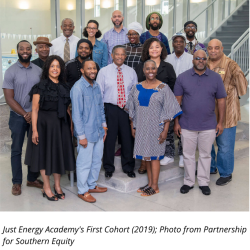Growing up in the South Los Angeles neighborhood of Watts, I experienced firsthand social, economic, and environmental injustices. One of the most polluted places in California, Watts suffers from cumulative environmental burdens. These environmental hazards are evident in the Alameda Corridor, a 20-mile-long freight line responsible for air pollution, and a Superfund site adjacent to the local public high school. The pollution is one reason the residents of Watts live 10 fewer years on average than those residing in nearby affluent neighborhoods. Just by living there, my life expectancy was likely reduced.
My commitment to working at the intersection of social and environmental justice is personal; it stems from my years having to advocate for access to clean air, clean water, affordable energy, and the right to live in a neighborhood not plagued by environmental neglect. But my experiences are not unique—many people of color and low-income communities across the nation live in neighborhoods that face staggering environmental, health, and social challenges.
In an ACEEE report and accompanying digital StoryMap released today, we identified six effective community-based clean energy strategies and case examples of community-based organizations (CBOs) working to advance equitable, local clean energy solutions for communities plagued by disinvestment and systemic injustices. These new resources offer recommendations for decision makers interested in engaging and supporting community-based clean energy efforts.
Community-Focused Strategies in Action
The new report analyzes 32 CBOs working to advance clean energy developments and assesses strategies they employ to support equitable clean energy development, bolster the local workforce, build community resilience, improve energy affordability, and spur economic prosperity. Here are six strategies these CBOs use to drive clean energy outcomes in local communities:
Our resources dive into case studies of CBOs modeling one or more of these strategies. In our StoryMap, we present videos and stories from three CBOs and highlight resources for decision makers seeking to foster equity in clean energy in the communities they serve.
The following are two examples of strategies CBOs may employ to develop effective programming and empower residents to become leaders, educators, and advocates in their communities.
Deliver Clean Energy Services to Maximize Benefits to Local Communities
CBOs can design and deliver local energy efficiency programs to reduce residents’ energy expenses and make their homes healthier. Independently or under hire by the local government, they can reach households that would otherwise struggle to access these resources due to high upfront costs. Programs that hire locally have the added benefit of providing residents well-paying jobs weatherizing homes in their community.
In West Buffalo, New York, People United for Sustainable Housing Buffalo (PUSH), a nonprofit organization, offers a community-based energy efficiency program called PUSH Green.
The program delivers energy efficiency services to residents and small businesses, nonprofits, and multifamily properties and bolsters the local workforce while reducing the dependency on fossil fuels. PUSH Green offers residents free or reduced-cost comprehensive home energy assessments, solar installations, and educational workshops on energy efficiency, weatherization, and solar energy. Since 2012, PUSH Green has provided services to more than 700 low- to moderate-income households and created 50 high-paying, high-quality jobs in the emerging green sector and construction industry.
Build Capacity in Communities for Locally Led Clean Energy Efforts
Empowering residents to bring about change in their communities can strengthen a new base of community leaders and advocates. CBOs are well suited to provide support and training to residents and partner organizations to advocate for energy equity and develop campaigns to ensure that public funds for energy efficiency and renewable energy are spent equitably and benefit all residents.
The Partnership for Southern Equity offers the Just Energy Academy,a seven-month energy equity leadership program that educates, trains, and empowers local community members to engage with stakeholders.
Participants gain skills and tools to advocate for energy equity, racial equity, climate justice, and energy policies that benefit their communities. The Just Energy Academy and similar community empowerment programs are crucial for strengthening and supporting local leaders.
Achieving Equitable Clean Energy through Local Government-CBO Partnerships
CBOs play a vital role in advancing equitable clean energy progress, and our report offers recommendations for local officials seeking to support them. Prioritizing accountability in collaborations between decision makers and CBOs can help address disparities in clean energy policy, program development, and evaluation processes while enabling the CBOs to define and drive clean energy initiatives.
The involvement of community members and organizations in clean energy planning and decision-making processes can ensure that residents—and future generations—benefit from these services and programs.





